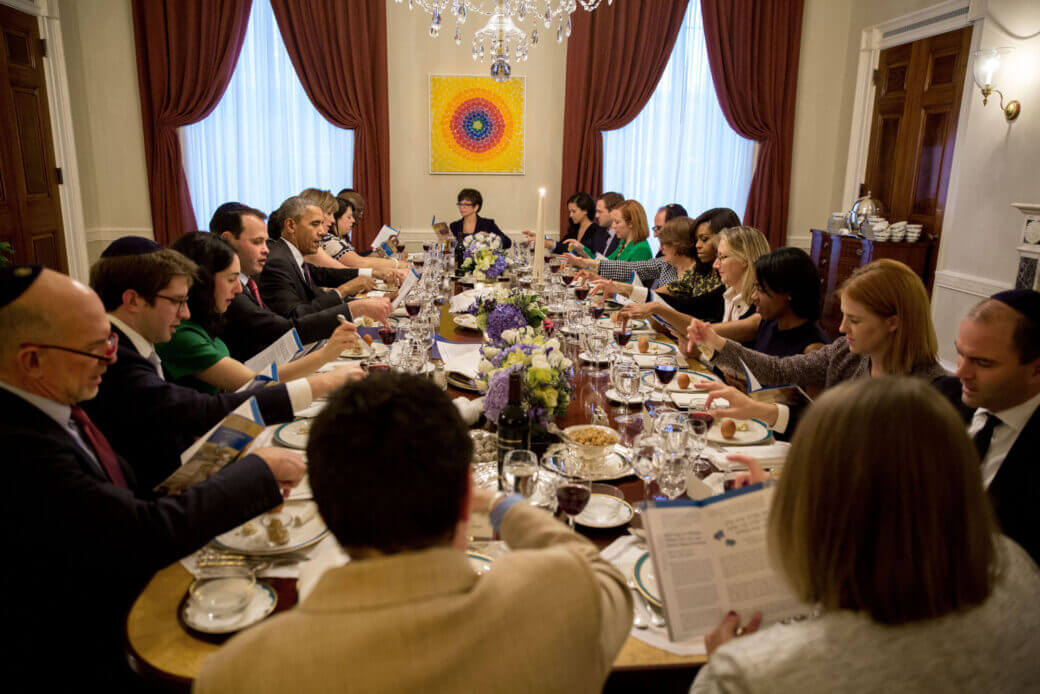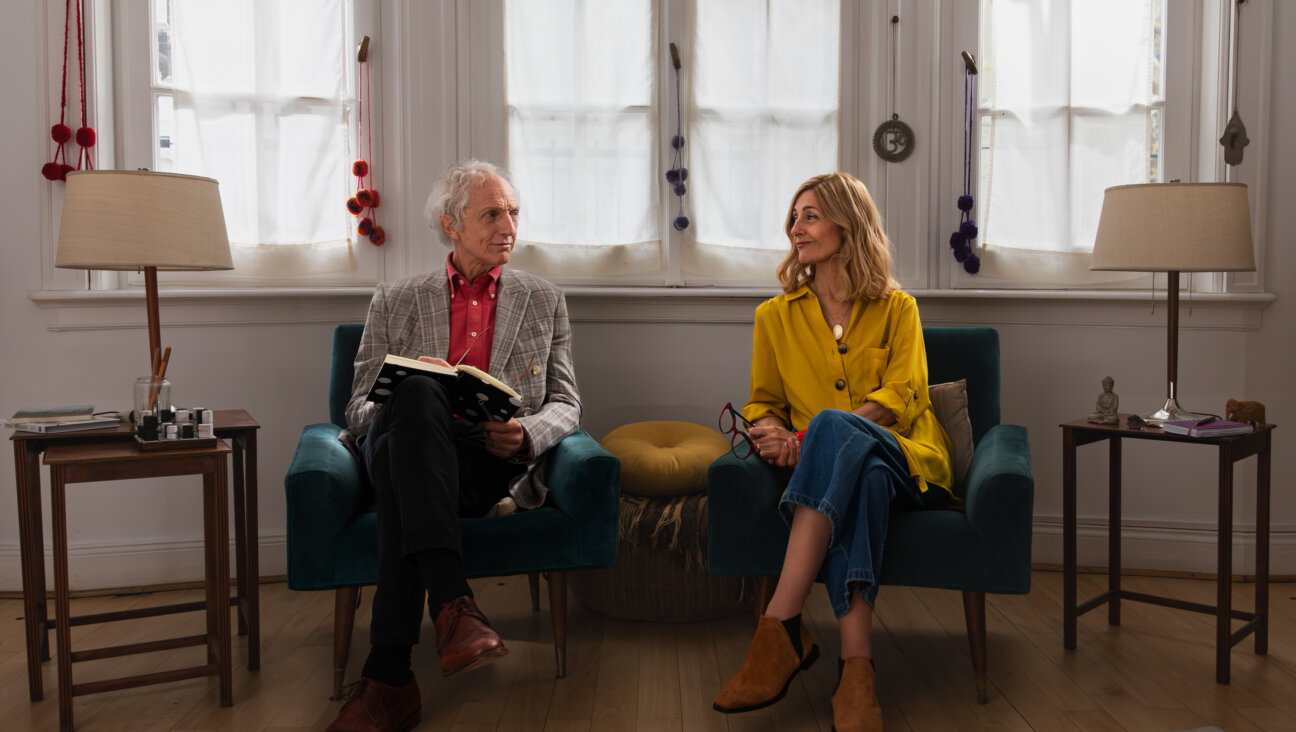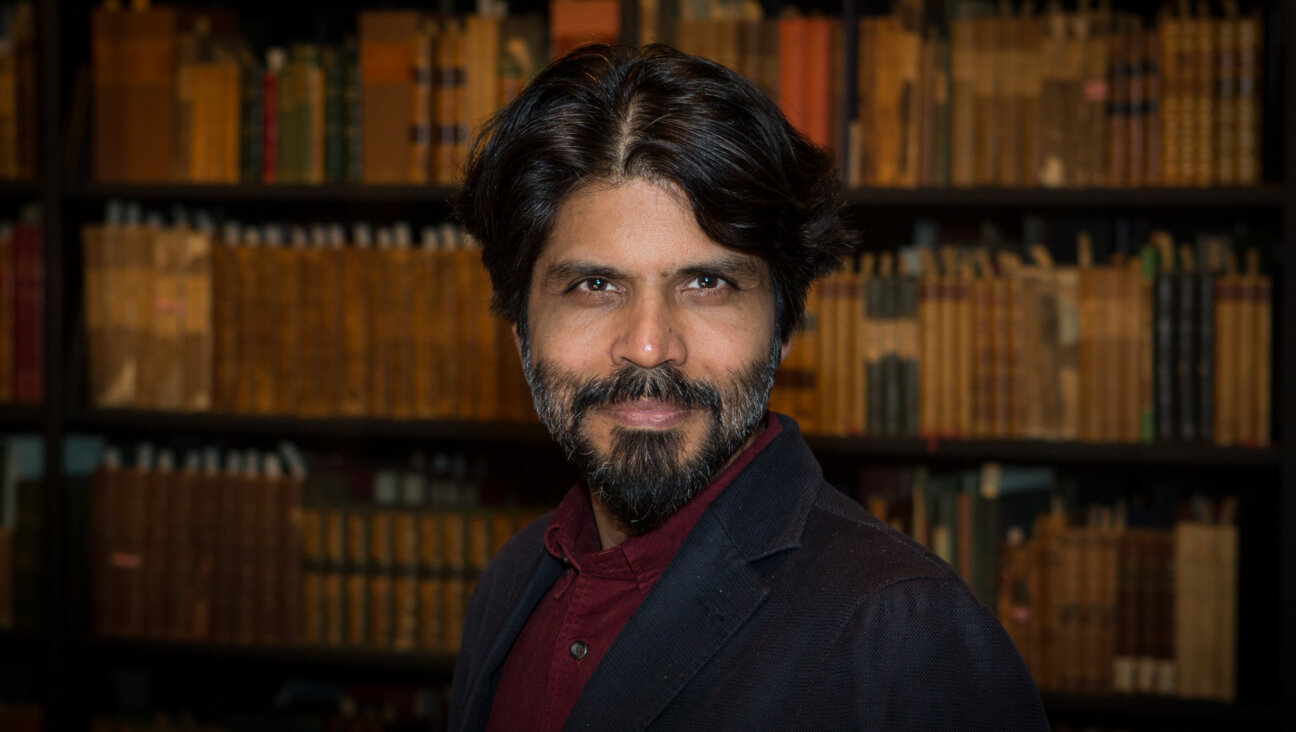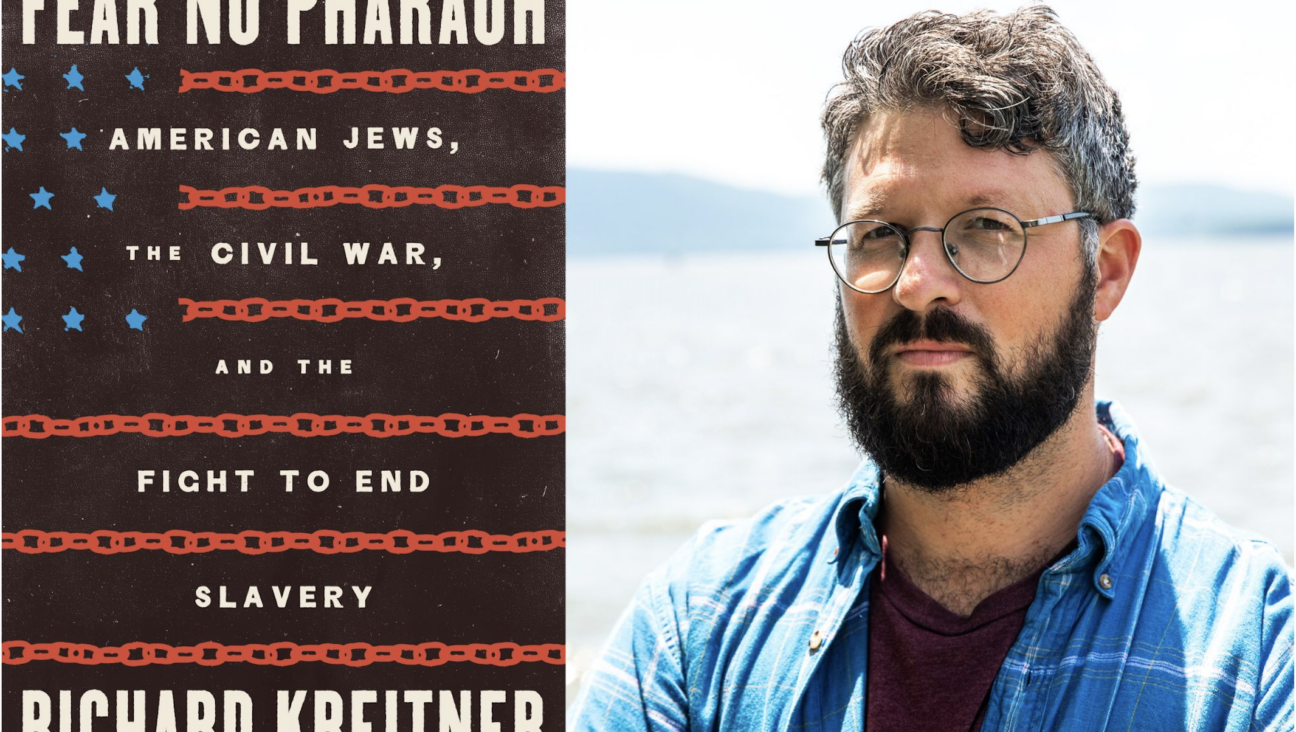Munich Redux
On November 9, Jews throughout Germany will mark the 68th anniversary of the notorious Nazi pogrom, Kristallnacht, with solemn commemorative ceremonies and with vows of “Never again.” Yet in Munich, the very city where the pogrom was first unleashed, a more hopeful tone will pervade the commemorative events: That same day, Munich will dedicate a major new synagogue that symbolizes the city’s ongoing effort to realize the elusive goal of “normalcy” in its relationship with the Jewish community.
Under construction since 2003 on the city’s historic Sankt-Jakobs-Platz, the synagogue is part of a larger complex of three Jewish communal buildings — reportedly the largest currently under way in Europe — that includes a Jewish museum and a community center, complete with a day school, a library and a kosher restaurant. The entire ensemble, known as the “Jakobsplatz Jewish Center,” is scheduled to be completed fully by 2007, but even in their partially completed state, the buildings — especially the synagogue — constitute major milestones in the history of the Munich Jewish community.
As is true of most synagogues built in Germany since 1945, the new Munich synagogue is intended to compensate for the destruction of its predecessor by the Nazis. On June 9, 1938, Munich earned the dubious distinction of demolishing its main synagogue (which was located at the edge of the historic city center, or Altstadt, on the Herzog-Max-Strasse) five months before Kristallnacht, when the city’s Gauleiter, Adolf Wagner, ordered it razed for a parking lot. The loss of this synagogue, and several others that were destroyed November 9 and November 10, 1938, meant that the small Jewish community remaining after 1945 could worship only outside of the Altstadt, in the far more modest Reichenbachstrasse synagogue (which, though damaged, survived the 1938 pogrom) or in smaller “shtibls” in outlying suburban neighborhoods.
The construction of the new synagogue complex near the city center, therefore, symbolizes the physical return of Jews of Munich from the urban periphery back to the core. Indeed, since the synagogue is the first to be situated within the historic boundaries of the Altstadt since the Middle Ages, it has been viewed widely as symbolizing the city’s long overdue acceptance of the Jewish community into its historic heart and, by extension, the beginning of a more normal relationship between Jews and Christians. Meanwhile, the willingness of the Jewish community to settle its institutions at such a highly visible and prestigious location reflects its readiness to abandon its postwar penchant for anonymity, embrace a more public and integrated presence in the Munich cityscape, and pursue what community leaders have described as the “normalization of daily life.”
This desire for normalcy is clearly reflected in the architecture of the synagogue complex. Designed by the Saarbrücken firm of Wandel, Hoefer und Lorch (which designed Dresden’s much lauded New Synagogue in 2001), the complex comprises three sleek modern buildings that strive to convey a sense of “openness” not previously associated with the Jewish community’s institutions. This goal is expressed not only aesthetically — especially in the synagogue’s glass dome — but also functionally in the various structures. Rather than being closed off and ringed with security personnel, the three buildings will be open to the public in order to facilitate Jewish-Christian interaction, particularly the community center, whose special-event hall, restaurant and school (which will be open to non-Jewish as well as Jewish students) aspire to be what community leaders have called a “modern shtetl for… the community and its friends.”
Indeed, the goal of fostering and normalizing Jewish-Christian interaction has been embraced warmly by the larger Munich population, as demonstrated by the considerable political and financial support provided to the project by Munich city officials, Bavarian state authorities, and the local Catholic and Protestant church establishments, not to mention the countless individual donations and successful high-profile fundraising efforts (including a recent benefit concert by violinist Anne-Sophie Mutter). And yet for all the progress, difficulties remain. Behind all the upbeat talk of normalcy lurks the very thing that both motivates and impedes it — the legacy of the Third Reich and the Holocaust. No matter how well intentioned the sentiments directed toward Jews have been in Munich, there is no doubt that local support for the Jakobsplatz project has been motivated in part by the desire to escape from the burdens of the Nazi past. Especially given the city’s shameful identity during the Third Reich as the Nazi “Capital of the Movement” the suspicion persists that the city’s support for the project is more about upgrading its sullied image than about genuine interfaith understanding.
In fact, the attempt of neo-Nazis to bomb the construction site in 2003 demonstrates that the shadow of the Third Reich continues to hover over the synagogue project. While the plot was foiled by the Bavarian police (and the perpetrators have since been sentenced to prison), the fact that 400 policemen were dispatched to the November 9, 2003, cornerstone-laying ceremony (and the probability that many will likely be present next week at the formal dedication) highlights the role of the Nazi past in impeding genuine normalcy.
Interestingly enough, however, the most unexpected and benign way in which the synagogue complex ultimately could impede normalcy may be its role in boosting the Munich Jewish community to an unprecedented level of national prominence. The original reason for constructing the Jewish complex in the first place was the need to centralize the community’s previously scattered institutions and better serve its growing population. Indeed, since reunification in 1990 and the influx of Jews from the former Soviet Union, the city’s Jewish population has swelled to 9,000 (close to its prewar size), making it Germany’s second-largest Jewish community and giving it a status it never enjoyed before the war, when it was far smaller than such Jewish communities as Berlin, Hamburg, Frankfurt, Cologne and Breslau.
So, now that Germany’s second-largest Jewish community soon will be presenting itself to a wider public in all its new architectural splendor, it will be unable to return to its previously “normal” state of inconspicuousness. Add to this the recent ascension of Charlotte Knobloch — longtime head of the Munich Jewish community (and a driving force behind the Jakobsplatz complex) — to the presidency of the Central Council of Jews in Germany, and it is clear that the Munich Jewish community will need to adjust its conception of normalcy upward to fit its enhanced national profile.
Gavriel Rosenfeld is an associate professor of history at Fairfield University and the author of “Munich and Memory: Architecture, Monuments, and the Legacy of the Third Reich” (University of California Press, 2000) and “The World Hitler Never Made: Alternate History and the Memory of Nazism” (Cambridge University Press, 2005).
The Forward is free to read, but it isn’t free to produce

I hope you appreciated this article. Before you go, I’d like to ask you to please support the Forward.
At a time when other newsrooms are closing or cutting back, the Forward has removed its paywall and invested additional resources to report on the ground from Israel and around the U.S. on the impact of the war, rising antisemitism and polarized discourse.
Readers like you make it all possible. We’ve started our Passover Fundraising Drive, and we need 1,800 readers like you to step up to support the Forward by April 21. Members of the Forward board are even matching the first 1,000 gifts, up to $70,000.
This is a great time to support independent Jewish journalism, because every dollar goes twice as far.
— Rachel Fishman Feddersen, Publisher and CEO
2X match on all Passover gifts!
Most Popular
- 1

Film & TV What Gal Gadot has said about the Israeli-Palestinian conflict
- 2

News A Jewish Republican and Muslim Democrat are suddenly in a tight race for a special seat in Congress
- 3

Fast Forward The NCAA men’s Final Four has 3 Jewish coaches
- 4

Culture How two Jewish names — Kohen and Mira — are dividing red and blue states
In Case You Missed It
-

Fast Forward Cornell pro-Palestinian student leader opts to leave US, as Columbia ‘self-deportee’ makes her case to return
-

Fast Forward ‘Need a final solution’: Podcast host calls for mass deportation of U.S. Jews
-
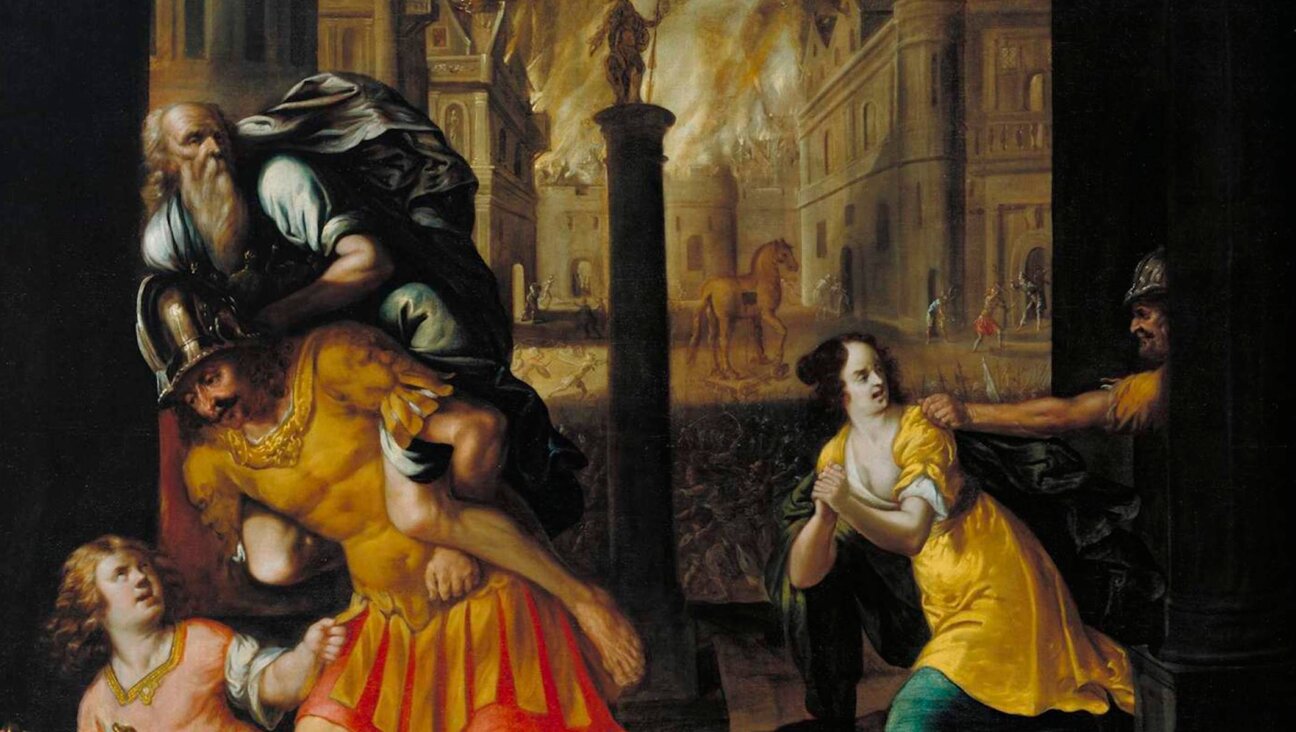
Fast Forward Britain’s Tate to return Nazi-looted painting to heirs of Jewish art collector
-

Fast Forward 3 sentenced to death for murder of UAE Chabad rabbi
-
Shop the Forward Store
100% of profits support our journalism
Republish This Story
Please read before republishing
We’re happy to make this story available to republish for free, unless it originated with JTA, Haaretz or another publication (as indicated on the article) and as long as you follow our guidelines.
You must comply with the following:
- Credit the Forward
- Retain our pixel
- Preserve our canonical link in Google search
- Add a noindex tag in Google search
See our full guidelines for more information, and this guide for detail about canonical URLs.
To republish, copy the HTML by clicking on the yellow button to the right; it includes our tracking pixel, all paragraph styles and hyperlinks, the author byline and credit to the Forward. It does not include images; to avoid copyright violations, you must add them manually, following our guidelines. Please email us at [email protected], subject line “republish,” with any questions or to let us know what stories you’re picking up.







